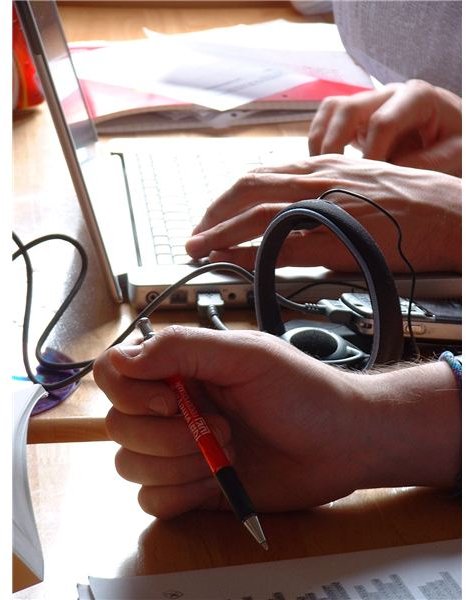How Different Generations Apply Collaboration
Collaboration - Then and Now
Historically, effective collaboration has been seen as something very difficult, messy, and to be done only once in a while. Collaboration, now, is seen as a necessary part of daily school and work life. These two drastically different paradigms co-exist, and they can cause problems in the workforce. Thus, it is important to recognize that different generations will have different views on collaboration. When you know how different generations apply collaboration, you can then work with the individuals representing those generations who are on your teams, to help them participate fully and integrate into the team successfully.
The Older Generations
The baby boomer generation and the preceding generation are most likely to have grown up thinking of work as a quiet and solitary experience. To study, you had to have absolute quiet, be alone in a corner, and focus intensely without outside distractions. Their habits in the workforce reflect this. Members of these generations are more likely to be happy in solitary offices or cubicles depending upon their rank within a company. They view rank as important and hard-earned, and are most likely to stick to the traditional nine to five job schedule. Many of the members of these generations believe that putting in overtime, climbing the ladder, and receiving rewards are the keys to success. Most importantly, these two generations are not used to collaboration - instead, the standard for the boomer generation rests upon the “I” attitude.
The Younger Generations
Members of Gen X and Gen Y view work differently. Work is only one part of the picture. Many members of these generations grew up with group projects, team sports, and collaborative efforts in school. When they enter the workforce, they expect both to collaborate on projects and to use the latest technology to do so. Divisions in rank are not as important to members of this generation - many of them went to college expecting to have beers with their professors and sit in on student government meetings to direct university decisions. Working in a diverse environment and the ability to have flexible hours are two key paradigms for these individuals.
Working With Both the Older and Younger Generations
Becaue of the radically different paradigms between older and younger generations, the trend toward collaboration in the workplace is bound to be met with some glitches. Those who are used to rank-based systems where you compete with coworkers for the large corner office are unlikely to have enough trust to seamlessly collaborate with younger colleagues. Those who are used to collaboration on everything are likely to be confused when older teammates don’t effectively communicate project status or assign tasks in a rigorous way (Gen X and Gen Y are also used to working autonomously on projects guided by self-direction).
How does one circumvent these problems? For starters, if your company currently wishes to transition to more collaborations, it is best to make this a gradual change, respecting the paradigms of the baby boomers and before when it comes to workplace structure. One way to do this is to integrate collaboration software into the structure of the company. This software can help newbies to collaboration get their feet wet, and those who are already familiar with collaboration expectations to engage in the use of technology. It also allows those who enjoy working in an office to do so, while still touching base with team members.
A second way to avoid problems is to engage your employees in a dialog about collaboration. You’ll be amazed what you find out when you get people talking. You can also calm fears and anxieties by demonstrating that they are ill-founded.
FInally, when working with multiple generations in a collaborative setting, it is important to ensure that everyone utilizes good time-management and communication skills. If team members regularly procrastinate on their work and do not discuss this with other members of the team, it can make things quite difficult and stressful for all involved.
